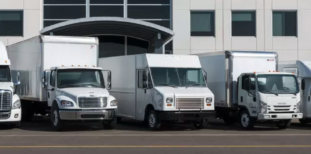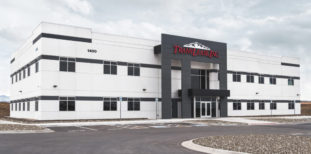When it comes to acquiring new equipment and commercial vehicles, businesses often face a critical decision: How should they pay for their purchase? While writing a check and traditional loans are a well-known options, a Terminal Rental Adjustment Clause (TRAC) Lease can offer greater flexibility, lower monthly payments, and end-of-term options that better align with business needs. In this article, we’ll explore the basics of a TRAC Lease, its advantages, and how it compares to other equipment financing options.
What Is a TRAC Lease?
A TRAC Lease is a type of lease specifically designed for titled equipment, such as trucks, trailers, and heavy equipment. It allows businesses to finance equipment with lower monthly payments while maintaining flexibility in ownership at the end of the lease term. Unlike traditional leases that may require equipment to be returned, a TRAC Lease provides an option to purchase the equipment at a predetermined residual value.
Key Benefits of a TRAC Lease
A TRAC Lease offers several advantages that make it an attractive alternative to traditional financing:
Lower Monthly Payments
Since the lease is structured with a residual value, businesses pay less each month compared to a traditional loan. This allows for better cash flow management and the ability to allocate funds to other critical business expenses.
Flexible End-of-Term Options
Unlike traditional loans where the borrower must pay off the full amount, a TRAC Lease provides multiple options at the end of the term:
- Purchase the equipment at a predetermined residual amount.
- Trade it in for newer equipment.
- Extend the lease for continued use.
Potential Tax Benefits
Lease payments may be considered an operating expense, making them potentially deductible for tax purposes.* Traditional loans, on the other hand, only allow for depreciation deductions, which may not be as beneficial for some businesses.
Improved Cash Flow & Capital Preservation
By reducing monthly payments and deferring full ownership costs, businesses can free up capital for other investments such as expansion, hiring, or operational improvements.
Other Equipment Financing Options
While a TRAC Lease is a powerful tool, it’s not the only option available for financing titled equipment. Here are some other common financing structures:
FMV (Fair Market Value) Leases
An FMV Lease is a type of equipment lease where you make regular payments to use the equipment, and at the end of the lease term, you have the option to buy it at its fair market value. This type of lease is best for businesses that frequently upgrade to newer equipment and don’t need long-term ownership.
Installment Leases
An Installment Lease is a financing option that works like a loan but with the benefits of a lease. You make fixed monthly payments over a set period, and at the end of the term, you own the equipment outright. It’s a good choice for businesses that want to spread out costs while eventually owning their equipment.
Loan and Security Agreement
A loan and security agreement allows you to own your equipment while paying a fixed rate to finance it. Trans Lease is the first lien holder on the asset, but you retain ownership throughout the agreement. While monthly costs are higher than a TRAC Lease, businesses that prefer to own their equipment outright may find this option preferable.
Which Option Is Right for You?
The right financing option depends on your business model, cash flow needs, and equipment usage. If you’re considering a TRAC Lease or another financing option, our team is here to help. Contact us today for a personalized consultation and find the best financing solution for your business!
_
*Consult your tax professional for specific tax benefits applicable to your business.







